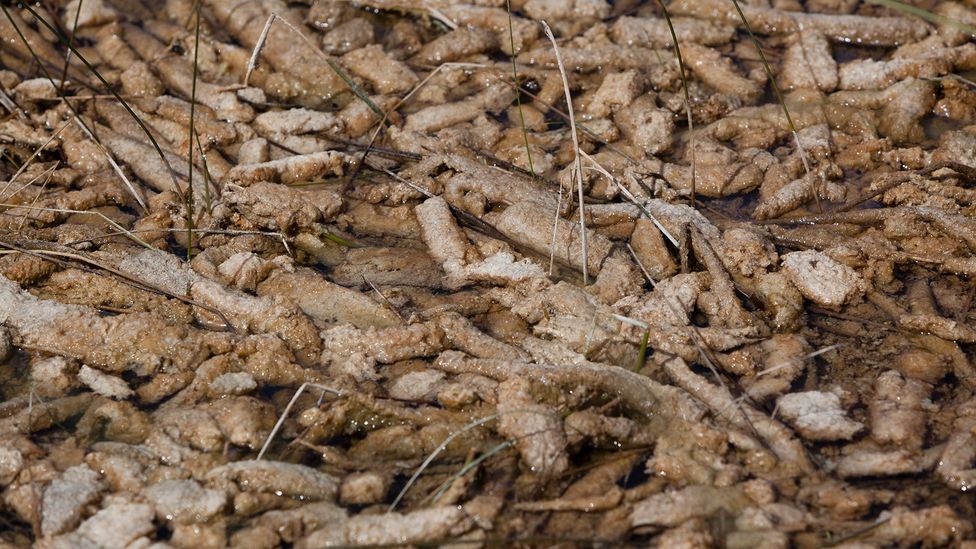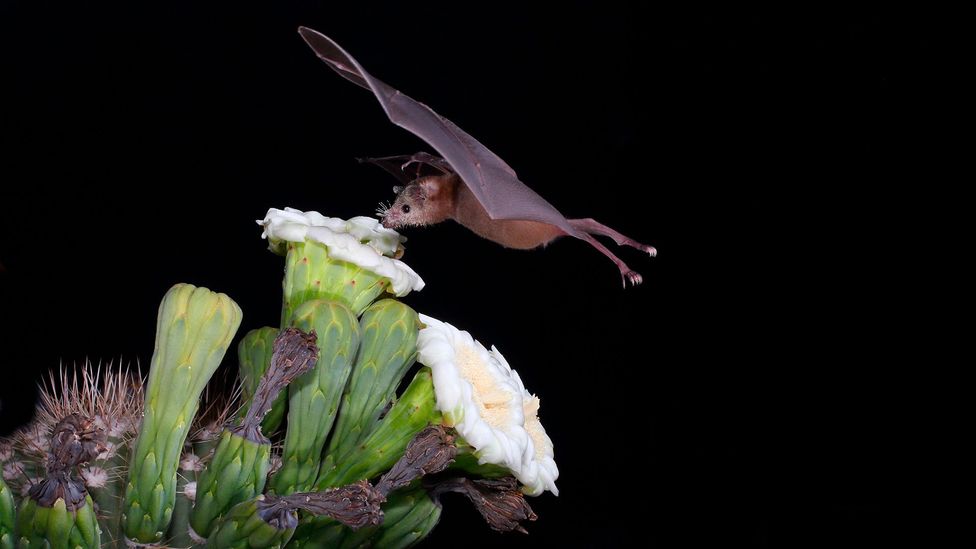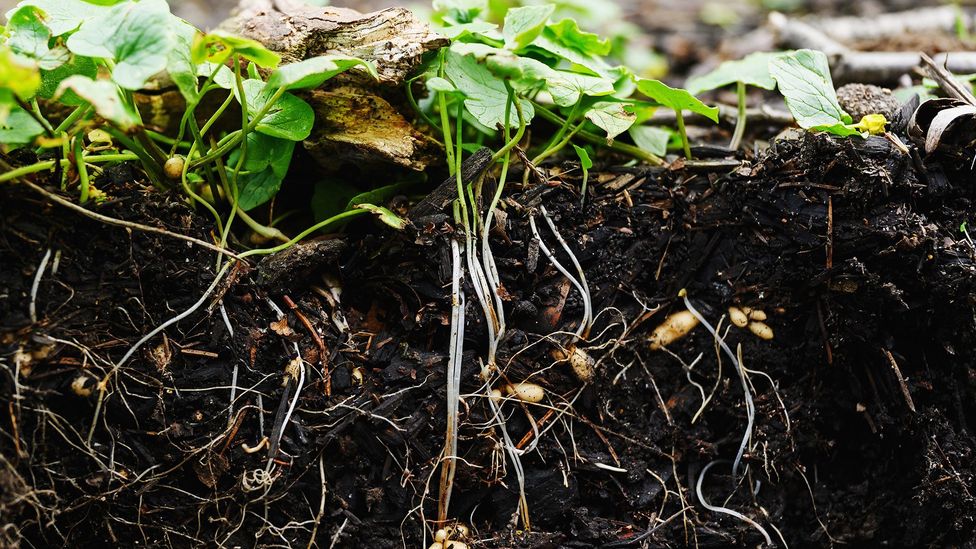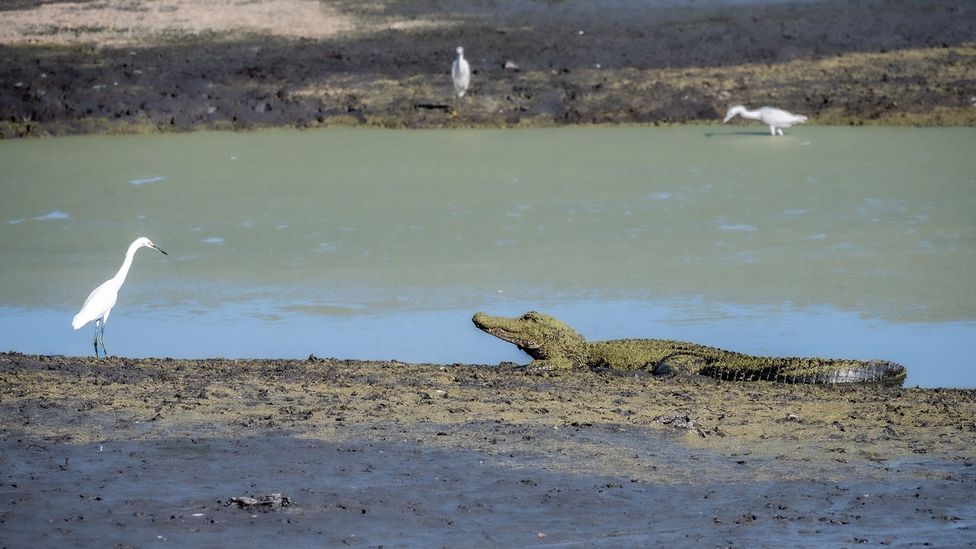The interspecies relationships that evolved in nature
From bats and carnivorous plants to crocodiles and birds, nature is full of remarkable pairings that depend on each other to survive.
A
A green-brown spongy sludge congregates en masse across the surface of the Everglades’ shallow marshes in southern Florida. At first glance, it may look like a harmful algal bloom that sucks oxygen from the water, suffocating the surrounding ecosystem and releasing toxins. But it is in fact a beautifully productive coupling of algae, fungi and a few other third, fourth and fifth wheels, such as plant detritus, microbes and bacteria.
This cluster of beings forms a perfectly matched relationship, known as a periphyton, and provides the cornerstone of the Everglades’ highly biodiverse ecosystem explains Meenakshi Chabba, a scientist with the non-profit Florida’s Everglades Foundation. “It’s incredible because you have this community of organisms coming together and they form this matter which is the basis of the entire food chain here.”
A periphyton is an example of mutualism; an unexpectedly close cross-species relationship. As with any relationship, mutualism involves various, complex types of codependency and benefits – yet it roughly breaks down into two types: species that are highly dependent on each other, known as obligate mutualism; and species that have a friends-with-benefits approach, known as facultative mutualism. This latter type gets something out of the relationship, but they’d survive without each other just fine.

Periphytons are formed from a cross-species coupling of algae and fungi, together with plant detritus, microbes and bacteria (Credit: Getty Images)
In this sense, while periphyton’s slimy mixing of algae and fungal matter perhaps isn’t nature’s most glamourous pairing, it has resulted in a symbiotic romance which has lasted for “probably hundreds of millions of years” says Chabba.
You might also like:
- The bees learning to fight off invasive hornets
- The mysterious inner life of the octopus
- Squirrel and Japanese knotweed: Pests on the menu
So as many of us dwell on the ingredients of a good relationship, we explore some other unusual – yet wildly successful – couples of the animal and plant kingdom that could give humanity some romantic inspiration.
Woolly bats and pitcher plants
Not everyone could handle the carnivorous pitcher plant but the Borneo-based beauty has found its perfect match in the form of a woolly bat. The plant, which usually suffocates its victims via a sticky slime, lures the bat in with an echo reflector. But it’s not the bat the plant is after; this tropical hunter has eyes for only one thing: the bat’s droppings. The pitcher plants grow in soil that’s low in nutrients, and they need additional fertiliser – which the droppings provide. In return, the bats find the perfect bed. They spend their days resting inside the plant, which offers the bats a safe refuge instead of turning them into food.

Pitcher plants receive additional fertiliser from the droppings of woolly bats (Credit: Getty Images)
Clover roots and sugar-munching bacteria
Legumes, such as beans, peas, chickpeas and clover, form a symbiotic relationship with bacteria that can fix nitrogen from the air, and turn it into ammonia – which the plants then convert into protein and use to grow. It’s a mutually beneficial relationship that is around 60 million years old. In return for the bacteria’s support, the plant houses the bacteria in root nodules – tiny pinkish balls – and provides them with sugars and oxygen so they too can grow. So next time you’re weeding and pull out a clover, have a look at the roots and marvel at this ancient partnership.

Legumes form a symbiotic relationship with bacteria that can fix nitrogen from the air (Credit: Getty Images)

Somewhat counter-intuitively, long-legged wading birds can seek protection from predators by nesting above American alligators (Credit: Getty Images)
Call out Box: Sign up to Future Earth
In Hawaii, plants have co-evolved to perfectly fit the beak of the birds that come to feed on them. As these birds go extinct, the plants that relied on them for pollination are expected to follow suit. In other words, these plants have been widowed, and may not be able to survive without their pollinating partners.
Mutualisms can “bind species to a common fate”, noted one study on species partnerships. The relationship breakdown has the potential to expand and accelerate effects of biodiversity loss and ecosystem disruption.
But it may not be all breakups and uncoupling; nature is resilient, and these species may find ways to survive outside of these symbiotic relationships. “There are clear cases in which mutualisms show a surprising ability to adapt to global change, and even cases of new partnership evolving,” says evolutionary biologist Toby Kiers, who adds that these are mostly with invasive species, such as fungi developing an alliance with non-native eucalyptus. “It is not all doom-and-gloom.”
—
If you liked this story, sign up for The Essential List newsletter – a handpicked selection of features, videos and can’t-miss news delivered to your inbox every Friday.
Join one million Future fans by liking us on Facebook, or follow us on Twitter or Instagram.
.jpg)
